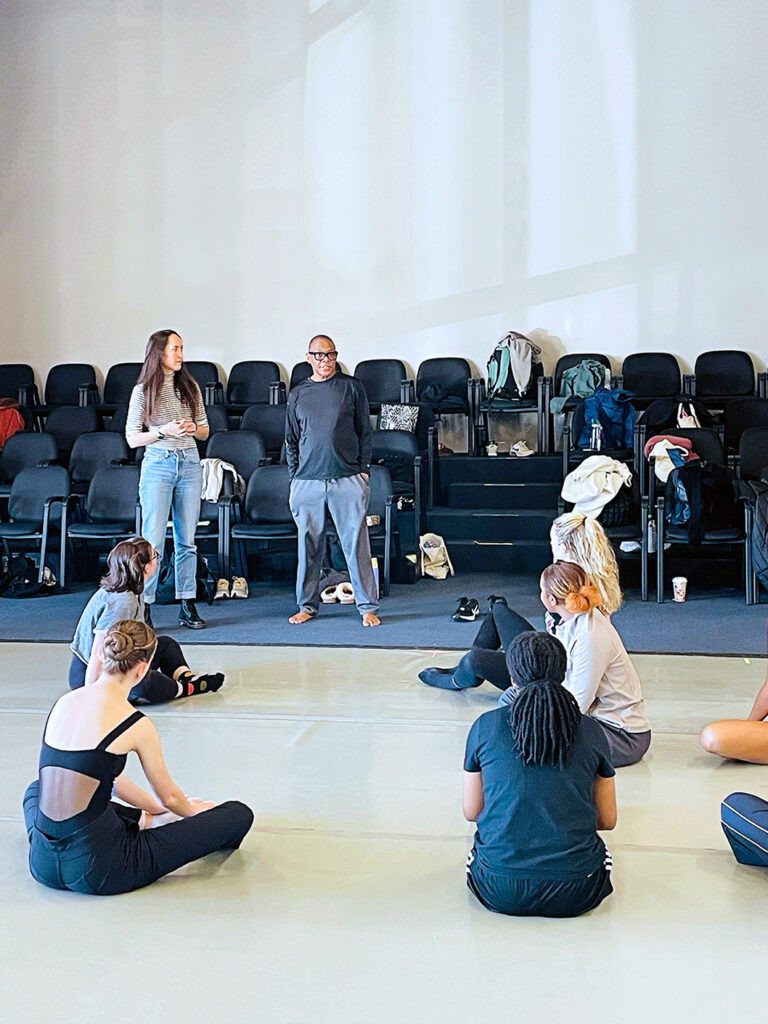Cornelius Carter Shares Dance as an Act of Community Service
Every dance artist begins their journey as a product of the community in which they began. While attending an all-Black school in the South, Cornelius Carter was asked by his high school dance teacher to choreograph for the school’s dance company. She noticed he had a natural talent for movement and saw the possibility of opening doors for both him and his peers. “I knew this opportunity could act as a type of currency for both myself and those around me,” Carter shares. Since receiving this life-altering request, he has treated dance as a passport connecting himself with community worldwide.
Once given the opportunity to immerse himself in dance, Carter took a passionate dive into the art form. “I was making dances before I even knew the term ‘choreographer.’ ” Treating this experience as an act of community service, he wanted to take his practice further to help others better their lives.
Upon graduation, Carter went on to receive an undergraduate degree at Webster University and an MFA degree at the University of Hawaii. He also did two summer programs with Kansas City Ballet on scholarship, performed briefly with Cleo Parker Robinson Dance, and continued his education at The Ailey School. “My performance and teaching careers have always coincided,” he says. “I encourage my students to follow suit. In a field where opportunities are very abundant, as well as limited, one always needs both practices in their wheelhouse.”
Continuing to treat his art form from the foundation of an act of service, Carter left his training at The Ailey School to take an opportunity others may have turned down: a full-time teaching job—his first—in Reykjavík, Iceland, at Dance Studio Soley. He would go on to spend four years bringing dance to this isolated island and still visits regularly.
Upon his return to the U.S., Carter went on to become the director of dance at the University of Alabama teaching jazz, modern, and composition: “I found it beautiful that this community had a forward-thinking vision for a predominantly African American student population, and it paid off! We developed strong programming and sought outside opportunities, like inviting American Ballet Theatre and the Radio City Rockettes into our facility for summer intensives. We had great pride seeing our students succeed, receiving work on Broadway and in shows around the world.”

Since retiring from his position at the university, Carter has been named professor emeritus and also holds the role of professor in residence at Broadway Dance Center in New York City. Even with so much experience behind him, his inspiration has not changed over the years.
Continuing to engage with a range of organizations around the world, at 63 years young he relishes the youthfulness the dance community brings to him. “Today, still, I am thrilled to be taking on new opportunities for myself, my students, and colleagues,” he says. “I’m so pleased to enjoy the privilege of being a part of this community and to continue working to find real sustainability in the art form.”
A true gentleman of the theater: “I practically live at The Joyce Theater. I attend performances nearly every night. What more certification does one need when you are wholly invested and educating yourself continuously.”
On winning through collaboration: “As a teacher and working artist, everything I continue to do today has come out of presenting a collaborative idea to someone. That is really my biggest win. Knowing this has allowed me to stay in this art form for decades.”
Advice for dance educators: “Surround yourself with other educators who think differently than you. This is critical for continued development.”
Secret classroom tip: “Always become aware when you are checking out of class. It is going to happen. You need to know how to dive back in at these moments.”
The skill of foresight: “I’ve never had any major challenges because I’ve always had the vision to foresee. I understand everything costs, so the first thing I look at is how to seek funding for what I want to do. I try to be aware and look at the situation I am in without abstraction. Only then can I make an informed decision.”
On legacy: “I am a firm believer in working to make somebody’s life better than it was before they met me.”
The post Cornelius Carter Shares Dance as an Act of Community Service appeared first on Dance Teacher.